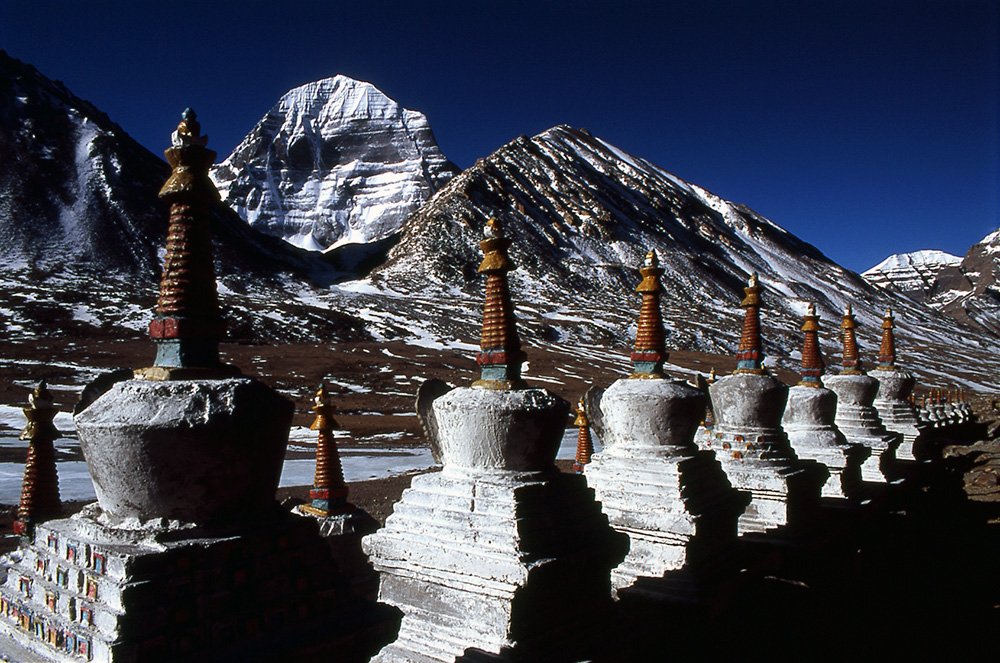 A steep road takes our Land Cruisers north. Behind us the Great Himalaya cover the skyline, while ahead opens an orange and sulphur-coloured wilderness where the Karnali withers away. The 25,000-foot massif of Gurla Mandhata, detached from the Himalaya in its own bright climate, comes shouldering down from the east, and my Tibetan driver, whose dashboard swings with protective photos of lamas, starts softly to sing.
A steep road takes our Land Cruisers north. Behind us the Great Himalaya cover the skyline, while ahead opens an orange and sulphur-coloured wilderness where the Karnali withers away. The 25,000-foot massif of Gurla Mandhata, detached from the Himalaya in its own bright climate, comes shouldering down from the east, and my Tibetan driver, whose dashboard swings with protective photos of lamas, starts softly to sing.
Near the village of Toyo to our west the most formidable nineteenth-century invader of Tibet came to grief. The Indian general Zorawar Singh, marching in the service of a lightly federated Sikh empire, had already conquered Ladakh and Baltistan, establishing one of the borders of modern India, and in spring 1841 he advanced out of Kashmir with some 500 men, seizing forts as he went. Near Taklakot he routed an 8,000 strong Tibetan army, but fatally detached himself with a small contingent to escort his wife back to the safety of Ladakh. On his return, a Sino-Tibetan force cut him off near Toyo, and his detachment was annihilated.
Such the were the legends surrounding him that only a golden bullet was said to have brought him down. His corpse was hacked into morsels to be hung up in local households, and even the hair of his body, which covered it ‘like eagles’ feathers’, was plucked out for luck. Every four years, at the great monastery of Shepeling, his enshrined testicle featured in a rare tantric rite, until the artillery of the Cultural Revolution buried it. At Toyo a walled tomb once enclosed the general’s filleted bones, but when Indian pilgrims visited in 1999 they found only rubble. Now the Tibetans have reassembled its stones into rough chorten, looped with flags, where they still murmur mantras to the invader.






